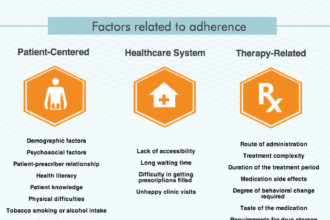We have talked about the health benefits of playing sports in the past. One of the most poplar sports is tennis. However, while tennis can be great for your health, there are also risk factors associated with it.
Tennis is a fun way to burn calories, but it has its perils. Tennis players are injured in roughly 2% of all the sets that they play. As long as you stay on the court, you must simultaneously use every muscle group in your body to avoid the risk of an injury.
Tennis requires a tremendous physical effort, so incidents like injured shoulders and pulled hamstrings are quite common.
But don’t let the fear of injuries deprive you of the joy of playing tennis. You can minimize injury risks by taking some precautionary measures. Today, we will give tips for keeping your body safe while playing tennis.
Before we learn how to avoid them, let’s acquaint ourselves with some injuries we frequently see on tennis courts.
Most Common Tennis Injuries
Tennis Elbow
In medical terms, the tennis elbow is known as lateral epicondylitis. It affects the forearm muscles and tendons on the outside of the elbow. Frequent arm and wrist movements lead to this condition.
That means the more you play, the likelier it is that you will suffer from tennis elbow. But poor technique can bring about this condition even if you don’t play too much tennis and allow your body enough recovery time after every game.
Common tennis elbow symptoms include pain on the outside of the elbow and moderate to severe pain with particular wrist movements. Avoiding overuse is the best way to keep tennis elbow at bay.
Ankle Sprain
Ankle sprain, aka rolled or twisted ankle, refers to the condition when one or multiple ligaments that connect to the ankle joint get stretched or partially torn. As you can imagine, it can be a pretty painful experience.
Since tennis requires constant movement around the court in all directions, tennis players are highly susceptible to ankle sprains. A sprained ankle will result in stiffness and swelling in the ankle region. It will severely hamper your ability to move quickly and steadily.
Muscle Strains
Tennis is an intense sport that can push your body to its limits. Prolonged tennis sessions will put your muscles, particularly calf and groin muscles, at risk of sustaining severe injuries. If you exhaust yourself playing tennis, you might end up picking up muscle strains.
Your muscles extend and contract repeatedly as you continuously run around the court to reach for the ball. So, the longer you continue playing, the more you are exposing your muscles to a higher risk of getting strained.
Rotator Cuff Tendinitis
Tennis players are more prone to shoulder sprains and rips than other athletes. The rotator cuff, a network of muscles and tendons surrounding the shoulder joint, is the most vulnerable area in the shoulder region.
The rotator cuff is responsible for providing stable arm movements in multiple directions. When these tendons become inflamed, rotator cuff tendinitis develops, which causes pain with overhead movements and restrictions in the shoulder’s range of motion and functionality.
Jumper’s Knee
Jumper’s Knee or Patellar Tendinitis refers to the inflammation of the tendon that connects the kneecap to the shin. Tennis can cause the patellar tendon to weaken or get strained over time, which can cause pain, swelling, and difficulties leaping, kneeling, or using the stairs.
Best Ways To Prevent Tennis Injuries
Fix Your Backhand Technique
While discussing tennis elbow injuries above, we mentioned that improper technique is one of the risk factors for it. Your backhand technique, in particular, must be ideal for avoiding tennis elbow.
If you are currently using a one-hand technique, you should try using both hands. The transition might take some time to become comfortable, but it will significantly lessen the stress on your forearm and elbow.
Try To Minimize Overhead Serves
Many tennis players love making overhead serves as it allows them to put a lot of power behind their serves. But it can damage your rotator cuff in the long run. So, you should make overhead serves more of an occasional approach rather than making it a regular weapon in your arsenal.
Try to keep the angle between your arm and your torso less than 90 degrees while making the serve. It’s a hugely effective trick to reduce tendon stress and lower your risk of rotator cuff injury.
If you want to play an overhead shot, it’s best not to wait for the ball to come directly above your head or get behind you. Execute the shot when the ball is slightly in front. In doing so, you will put far less stress on your rotator cuff.
Wear Tennis Shoes
In tennis, you must constantly move from side to side and change directions quickly. So, tennis players have a significant risk of slipping and spraining their ankles. Thankfully, there’s a simple way to subdue this threat.
Make sure you wear tennis-specific footwear with strong, substantial edge support to prevent your feet from losing grip. Stabilizing ankle braces can be beneficial for tennis players who want more support.
Tennis shoes should come with the right fit, provide support for your ankles and arches, and be appropriate for the court surface you’re playing on. Tennis shoes for hard courts have more durable outsoles, while those for clay courts offer better traction.
The Grip Size Should Be Perfect
Use the proper grip size for your tennis racket to reduce the load and shock on your elbow every time you make contact with the tennis ball. You may also string your tennis racket at a lower string tension to prevent tennis elbow or wrist strains.
Take Breaks
No matter how much you enjoy playing tennis, you should take regular breaks and allow your body to re-energize. The breaks can save you from exhaustion and prevent tennis elbow, rotator cuff, and other overuse-related injuries.
You might want to wear wearable devices to remind you to take breaks. We mentioned in the past that this helps reduce sports injury risks.
Don’t Forget To Warm Up.
Don’t get right into the action; build up to it. After arriving at the court, try some stretches and light exercises to prepare your body for more intense action. If you enter the match before your body is ready, you might have to limp off the court, a sight nobody wants to see.
Final Thoughts
Tennis injuries can be scary, but they are easily preventable. Covering the basics of using the right equipment and having a good exercise routine will considerably lower the risk.
On top of that, try out the other tricks we have mentioned here so that you can be even more assured entering the court.










